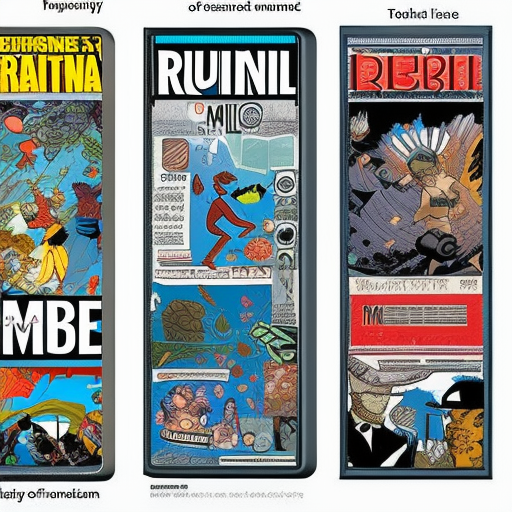Summary:
Graphic novels are a form of storytelling that combines both visual and written elements to create a unique narrative experience. They have gained popularity in recent years and have become a significant part of the literary and artistic landscape. Graphic novels encompass a wide range of genres and themes, offering readers a diverse array of stories and artistic styles to explore.
What are Graphic Novels?
Graphic novels are a medium that blends elements of traditional novels and comic books. They typically consist of a sequential narrative told through a combination of illustrations and text. Unlike traditional comic books, graphic novels are usually standalone stories that are longer and more complex. They often tackle a wide range of subjects, including fantasy, science fiction, memoirs, historical events, and social issues.
The Rise of Graphic Novels
Graphic novels have experienced a surge in popularity in recent years, with a growing number of readers and a wider acceptance in the literary world. This rise can be attributed to several factors. Firstly, the success of graphic novels like Art Spiegelman’s “Maus” and Alan Moore’s “Watchmen” helped establish the medium as a legitimate form of storytelling. Additionally, the accessibility of graphic novels, with their visual storytelling and diverse subject matter, has attracted readers who may not typically engage with traditional novels.
Artistic and Narrative Elements
Graphic novels employ a variety of artistic and narrative techniques to convey their stories. The illustrations, often created by a single artist or a team of artists, play a crucial role in setting the tone, establishing the atmosphere, and conveying emotions. The combination of images and text allows for a more immersive reading experience, as readers can interpret the story through both visual and written cues. The pacing and panel layout also contribute to the narrative flow, with artists utilizing techniques such as page composition, panel size, and panel arrangement to create dynamic and engaging storytelling.
Genres and Themes
Graphic novels encompass a wide range of genres and themes, catering to diverse reader interests. They can be found in genres such as fantasy, science fiction, mystery, horror, romance, and historical fiction. Additionally, graphic novels often explore complex themes and social issues, including identity, race, gender, sexuality, mental health, and politics. This diversity allows for a broad range of stories and perspectives to be represented within the medium.
Impact and Recognition
Graphic novels have gained recognition and critical acclaim in the literary world, with many receiving prestigious awards and nominations. The inclusion of graphic novels in school curricula and libraries has also helped to legitimize the medium and introduce it to a wider audience. Furthermore, the adaptation of graphic novels into films and television shows has brought these stories to a broader mainstream audience, further solidifying their place in popular culture.
The Future of Graphic Novels
As graphic novels continue to grow in popularity, their future looks promising. The medium allows for innovative storytelling techniques and artistic expression, attracting both established authors and emerging talents. With the increasing acceptance and recognition of graphic novels as a legitimate form of literature, it is likely that the medium will continue to evolve and thrive, offering readers new and exciting narratives for years to come.
In conclusion, graphic novels are a unique form of storytelling that combines visual and written elements to create immersive narratives. They have gained popularity in recent years, offering readers a diverse range of genres and themes to explore. With their artistic and narrative techniques, graphic novels have become a significant part of the literary and artistic landscape, receiving recognition and critical acclaim. As the medium continues to evolve, it is poised to captivate readers and push the boundaries of storytelling in the future.












